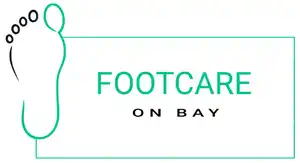General Foot Pain Treatment in Toronto
General Foot Pain: Causes, Relief, and When to Seek Help
If you’re struggling with persistent aches, throbbing, or sharp pains in your feet, you’re far from alone. General foot pain is an incredibly common issue, impacting people of all ages and lifestyles.
Whether it’s a nagging discomfort after a long day or a debilitating pain that limits your ability to walk, understanding the root causes and available treatments is essential for regaining comfort and mobility.

What Is General Foot Pain?
General foot pain describes discomfort affecting one or more areas of the foot without a specific, acute injury. It can manifest in various ways – as a constant ache, a sharp stabbing sensation, or a burning feeling.
While some cases are temporary, others can become chronic and significantly impact your quality of life.
Common Symptoms of General Foot Pain:
- Aching or throbbing pain in the arch, heel, toes, or ball of the foot
- Sharp, stabbing pain when standing or walking
- Soreness or fatigue after physical activity
- Swelling, redness, or warmth in affected areas
- Stiffness, burning, or tingling sensations
- Numbness in the toes or soles of the feet
- Limited range of motion in the ankle or toes
Your Feet Deserve Professional Care
Book your appointment today and take the first step toward healthier, pain-free feet.
Common Causes of Foot Pain
Foot pain can stem from a wide range of issues, from simple lifestyle factors to underlying medical conditions.
1. Improper Footwear
-
- Poor support: Leads to strain and inflammation
- Tight fit: Can cause bunions, hammertoes, and nerve compression
- High heels: Increase forefoot pressure and risk of metatarsalgia
- Worn-out shoes: Lose cushioning and support over time
- Flat sandals: Lack structure and arch support
2. Overuse and Excessive Strain
-
- Prolonged standing on hard surfaces
- High-impact sports like running and jumping
- Sudden increase in activity without proper conditioning
3. Structural and Biomechanical Issues
-
- Flat feet (pes planus): Uneven weight distribution
- High arches (pes cavus): Reduced shock absorption
- Overpronation: Excessive inward rolling of the foot
- Leg length discrepancy: Uneven stress on feet
4. Injuries and Trauma
-
- Sprains, strains, or ligament injuries
- Stress fractures from repetitive impact
- Bruises from direct trauma
5. Underlying Medical Conditions
-
- Plantar fasciitis
- Achilles tendonitis
- Metatarsalgia
- Morton’s neuroma
- Arthritis (osteoarthritis or rheumatoid arthritis)
- Diabetes-related neuropathy
- Gout (uric acid buildup)
- Peripheral artery disease (PAD)
6. Age-Related Changes
-
- Thinning fat pads on the soles of feet
- Reduced flexibility of tendons and ligaments
- Development of bone spurs
What Our Customers Say
When to Seek Professional Care: Recognizing the Warning Signs
Visit a podiatrist if you experience:
- Severe pain that doesn’t improve with rest
- Pain lasting longer than one week
- Swelling, redness, or warmth
- Numbness or tingling in toes or soles
- Open sores or wounds
- Difficulty walking or bearing weight
- Visible changes in foot shape

How A Podiatric Can Help?
What to Expect During a Podiatric Evaluation
A thorough podiatric assessment may include:
- Review of your symptoms and medical history
- Physical examination of your feet and ankles
- Gait analysis
- Imaging (X-rays, ultrasound, or MRI)
Advanced Treatment Options Offered by Podiatrists
- Custom orthotics: Designed for your foot structure
- Physical therapy: Exercises to improve strength and mobility
- Injection therapy: Corticosteroids to relieve pain
- Shockwave therapy: Stimulates healing in chronic pain
- Nerve blocks: Relieve persistent nerve pain
- Surgery: Reserved for severe or unresponsive cases
Prevention Strategies for Long-Term Foot Health
- Choose shoes appropriate for your activity
- Replace worn-out footwear regularly
- Stretch feet and calves daily
- Maintain a healthy weight
- Limit standing on hard surfaces
- Use orthotic inserts if prescribed
- Regularly inspect feet for problems (especially for diabetics)
Frequently Asked Questions About General Foot Pain
Is it normal for my feet to hurt after standing all day?
Some fatigue is expected, but ongoing pain should be evaluated.
What's the best way to relieve foot pain after running?
Rest, ice, elevate, and stretch your feet and calves.
Can wearing the wrong socks cause foot pain?
Yes. Poorly fitted or non-breathable socks can contribute to discomfort.
Are high heels always bad for my feet?
Occasional wear is fine, but regular use can lead to long-term problems.
How can I tell if I have flat feet?
A podiatrist can confirm with a simple exam or test.
Can foot pain be related to back or hip issues?
Yes, misalignment and imbalances can affect foot function.
What kind of doctor should I see for foot pain?
A podiatrist specializes in foot and ankle care.
Is surgery always necessary for foot pain?
Most cases can be managed without surgery.
Can I prevent foot problems from getting worse?
Yes, through early intervention and preventive habits.
What exercises help strengthen feet?
Toe curls, calf raises, and ankle rotations are effective.
Final Thoughts: Prioritize Your Foot Health
Foot pain can seriously impact your quality of life, but it doesn’t have to be permanent. By identifying the cause, using at-home strategies, and seeking professional care when necessary, you can find lasting relief and restore your comfort.
Looking for better foot support? We're just around the corner.
Call us today at
